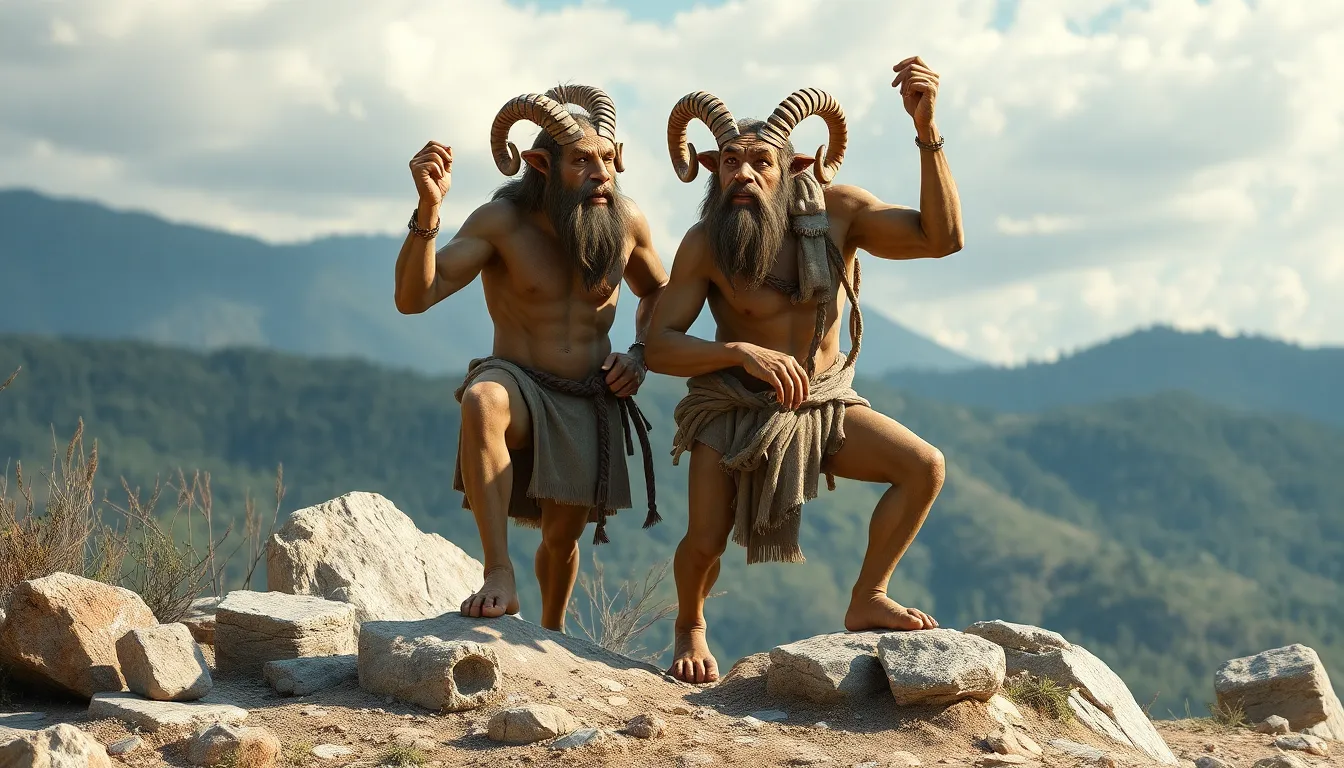The Role of Satyrs in Shaping Cultural Norms and Values
I. Introduction
Satyrs are one of the most intriguing figures in Greek mythology, often depicted as half-man, half-goat beings associated with Dionysus, the god of wine and festivity. They epitomize the connection between humanity and nature, embodying both the primal instincts and the chaotic aspects of life. Their significance extends beyond ancient tales, influencing modern cultural contexts and societal norms.
This article aims to explore the influence of Satyrs on cultural norms and values, examining their historical origins, symbolic representations, and the duality they represent in society.
II. Historical Background of Satyrs
A. Origins in Greek mythology
Satyrs originated in ancient Greek mythology, often associated with woodland and pastoral settings. They were believed to be companions of Dionysus, participating in his ecstatic celebrations and representing the untamed aspects of nature. Early depictions show them as rustic figures with animalistic features, emphasizing their connection to the wild.
B. Evolution of Satyr representations in art and literature
Over the centuries, Satyrs evolved in their portrayal:
- In early art, they were depicted with exaggerated features like pointed ears and tails.
- Later representations, especially in literature, began to emphasize their more human qualities, exploring themes of desire and freedom.
- Satyr plays, a form of ancient Greek drama, showcased their humorous and often lewd antics, reflecting societal attitudes towards sexuality and revelry.
C. Influence of Satyrs in Roman culture
As Greek culture spread, Satyrs were adopted into Roman mythology, often blending with figures like Faunus, the Roman equivalent. They maintained their association with nature and fertility, continuing to symbolize the wild and untamed aspects of life.
III. Satyrs as Symbols of Nature and Wildness
A. Connection to fertility and the natural world
Satyrs are intrinsically linked to fertility, representing the life force of nature. Their dances and festivities were often tied to agricultural cycles, celebrating the bounty of the earth.
B. Representation of primal instincts versus civilized behavior
Satyrs embody the tension between primal instincts and the constraints of civilized society. They challenge individuals to embrace their natural desires while also highlighting the consequences of unchecked hedonism.
C. Impact on societal views of freedom and restraint
The duality of Satyrs has influenced societal views on freedom and restraint, suggesting that embracing one’s instincts can lead to both liberation and chaos, prompting discussions about the balance of personal freedom within societal norms.
IV. Satyrs and the Concept of the “Other”
A. Satyrs as figures of marginalization and the outsider
Satyrs often represent the ‘Other’ in society, marginalized due to their animalistic qualities. This outsider status allows them to act as a mirror to societal norms, questioning what it means to be civilized.
B. Reflection of societal fears and desires
As figures embodying both desire and chaos, Satyrs reflect societal fears of losing control to base instincts. Their presence in myths often evokes a struggle between repression and indulgence.
C. Influence on cultural narratives regarding identity and acceptance
The portrayal of Satyrs encourages discussions around identity and acceptance, challenging rigid societal norms and advocating for a more inclusive understanding of different identities.
V. The Role of Satyrs in Festivities and Rituals
A. Participation in ancient festivals like Dionysia
Satyrs played a crucial role in ancient Greek festivals, particularly during the Dionysia, where they were celebrated for their exuberance and revelry. Their presence symbolized the breaking of societal norms through festivities.
B. Influence on modern celebrations and cultural practices
Modern celebrations, such as Mardi Gras or Carnival, echo the spirit of Satyrs, emphasizing themes of freedom, indulgence, and community, often encouraging participants to embrace their more playful and primal sides.
C. Role in the promotion of communal values and social cohesion
Through their association with communal festivities, Satyrs promote social cohesion, reminding society of the importance of celebration, unity, and the shared human experience.
VI. Satyrs in Literature and Popular Culture
A. Analysis of Satyrs in classical texts and their moral implications
In classical literature, Satyrs often serve as cautionary figures, representing the dangers of excess while also illustrating the joy found in embracing one’s humanity. Works such as Aristophanes’ plays highlight these moral complexities.
B. Contemporary representations in films, literature, and media
In modern media, Satyrs continue to appear, often reimagined in various forms:
- In films like “Pan’s Labyrinth,” they symbolize the clash between innocence and the harsh realities of the world.
- Literature often portrays them as comic relief, yet still embodying deeper philosophical questions about human nature.
C. Examination of how these portrayals reflect or challenge societal norms
These contemporary representations challenge societal norms by exploring themes of identity, acceptance, and the balance between chaos and order, echoing the lessons taught by their ancient counterparts.
VII. The Duality of Satyrs: Chaos and Order
A. Exploring the balance between hedonism and responsibility
The Satyr’s existence is a constant struggle between hedonism and responsibility. They encourage individuals to seek pleasure while also reminding them of the potential consequences of excess.
B. Satyrs as agents of change within societal structures
As figures that disrupt the norm, Satyrs can act as agents of change, challenging stagnant societal structures and prompting growth and evolution in cultural values.
C. Lessons learned from Satyr representations in navigating modern dilemmas
Modern society can learn from the duality of Satyrs, recognizing the importance of balance between freedom and restraint, and the need to embrace both the wild and the civilized aspects of human nature.
VIII. Conclusion
In summary, Satyrs play a vital role in shaping cultural norms and values through their rich historical background, symbolic representations, and influence on contemporary society. They remind us of the importance of embracing our primal instincts while navigating the complexities of civilization.
The lasting legacy of Satyrs invites further exploration of mythological figures, encouraging us to reflect on how these archetypes continue to resonate in our cultural narratives today.




